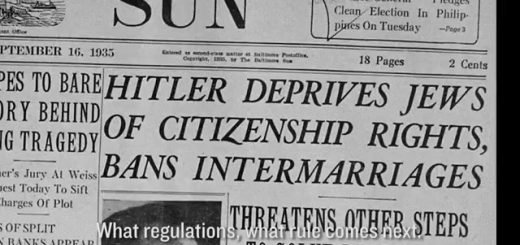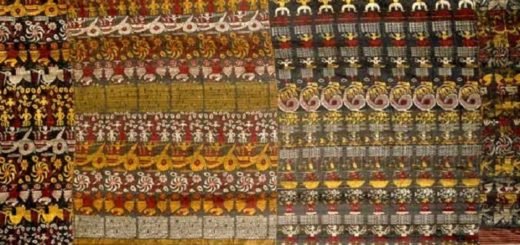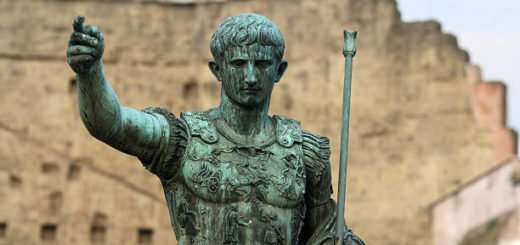The battle of Gallipoli: recollecting myths & facts
A century after the disastrous campaign in the Dardanelles, Gary Sheffield challenges some commonly held assumptions about this failed attempt to change the course of the First World War…
In a decidedly unglamorous war, Gallipoli provides a splash of colour. It was a dramatic strategic stroke, originating in the imagination of Winston Churchill, which sent soldiers and sailors far from the drab trenches of Flanders to a romantic country – familiar, from the pages of Homer to the classically educated officers who served there.
Conceived at a time when Britain’s leaders grappled with the unpalatable reality of deadlock on the western front, the Dardanelles campaign utilised Britain’s major asset, seapower. A British-French fleet would force its way through the Dardanelles, the narrow straits that separate the Gallipoli peninsula in Europe from Asia and reach Constantinople, capital of Germany’s ally Ottoman Turkey. With Turkey out of the war, this would aid Russia and allow a large army provided by Balkan states such as Romania and Greece to be unleashed in the Balkans. This would tilt the odds decisively in the favour of the Allies.
The reality was to be very different. Throwing away strategic surprise by bombarding Turkish coastal defences in February 1915, the fleet suffered heavy losses from mines and shore batteries when on 18 March it attempted to force the straits. The campaign moved into a new phase on 25 April when the British 29th Division landed on the tip of the Gallipoli peninsula, at Cape Helles; the untried Australian and New Zealand Corps (ANZAC) landed at what became known as Anzac Cove; and a French force landed, as a diversion, on the Asiatic shore.
While the French re-embarked, according to plan, the men of 29th Division were pinned down at the water’s edge on the two main landing beaches. By the end of the day, the 29th had established a precarious toehold, but at the cost of terrible casualties. At Anzac Cove, the Australasians pushed inland only to be counterattacked by the Turks and pushed back almost to the beach – again, losses were heavy.
Just like on the western front, trench warfare ensued. Conditions were even more primitive, and fighting took place under a burning sun. Over the next few months, the Allies and the Turks launched attacks to try to break the deadlock, but all met with bloody failure.
On 6 August the British made fresh landings at Suvla Bay and a major effort was made to break out of the Anzac Cove beachhead. Like the earlier pushes, the August offensive was a failure. Deciding not to throw good money after bad, the Allies evacuated Gallipoli in two stages, in December 1915 and the following January.
The Dardanelles campaign, which had promised so much, ended in disaster. Yet, for all that, it has earned near-iconic status. An avalanche of books, films and newspaper articles have given it a colourful afterlife – one in which facts have had to share space with myth and legend. Here, I will attempt to distinguish the former from the latter.
Myth 1: The campaign was a good idea let down by poor execution
Was it really a strategic masterpiece – or just wishful thinking?
In 1930 General Sir George MacMunn wrote of Gallipoli that: “Mr Winston Churchill’s conception was magnificent.” However, he went on to say it was also “the most damnable folly that ever amateurs were enticed into”.
Today, it is still believed by many that Churchill had produced a strategic masterstroke that was only let down by the poor execution of naval and military commanders. However, the weight of recent historical scholarship has come to a very different conclusion: that the concept (for which Churchill was not wholly to blame) was vastly overambitious, that planning and intelligence were defective, that the resilience and fighting ability of the Turks was grossly underestimated, and that the operation was poorly resourced. In short, far from being a brilliant, potentially war-winning strategy, it was a piece of folly that was always likely to fail.

Winston Churchill, first lord of the Admiralty, the British navy, 1915 Gallipoli campaign | Image: History.com
Initially, the plan was based on British and French warships forcing their way through the Dardanelles and eventually arriving off the Ottoman capital, Constantinople. This ‘ships alone’ plan failed. Even if a military force had been sent initially to support the fleet, it would have needed to be significantly larger than the one that was actually deployed, as it would have had to operate on both shores of the straits, to clear the coastal defences. Such a force was simply not available in March 1915.
Even if the mines in the straits had been cleared and the battleships had got through (and it was not a given that the fleet would arrive at Constantinople unscathed) the question remains: what would happen next? The foreign secretary, Sir Edward Grey, admitted it was hoped that the presence of a hostile fleet would bring about a coup d’état that would lead to Turkey dropping out of the war. There is no credible evidence that such a coup would have been triggered. If that didn’t happen, and lacking soldiers to fight a ground campaign, the fleet would have had little choice but to turn tail and retrace its steps, humiliated. The whole concept was founded, to a remarkable degree, on wishful thinking.
Myth 2: The fighting at Gallipoli was mainly an Anzac affair
It may be the Australian casualties that are remembered in popular history, but the conflict was a multinational campaign…
Largely because of the importance of the campaign in the shaping of Australian and New Zealand identity, the participation of troops of other nationalities has been marginalised in popular memory. An even more extreme view is that it was an Australian campaign: it is worth remembering that the ‘NZ’ in Anzac stands for ‘New Zealand’.

Soldiers from Australia and New Zealand march during the International Service in recognition of the Gallipoli | Image: Daily Mail
In reality, Gallipoli was a multinational operation, involving troops from the United Kingdom (England, Scotland, Wales and undivided Ireland), Newfoundland, British India (including Gurkhas from Nepal), France, the French empire (including North Africans and Senegalese), Russian Jews (who wanted to fight the Ottomans as a first step to establishing a homeland in Palestine), as well as Australians and New Zealanders, the latter including Maori. Anzacs formed a relatively modest proportion of the total. The initial landing force on 25 April 1915 consisted of 18,100 men in the ANZAC Corps, 16,800 French, and 27,500 British.
The total number of British soldiers that served at Gallipoli far outnumbered Australians. Indeed more French troops fought on the peninsula than did Australians. However, the Australians had the second highest casualties. The figures for Allied killed and wounded make sobering reading. The British suffered 70,700 casualties (of which 26,000 were killed); Australians, 25,700 (7,800 killed); French, 23,000 (8,000 killed); New Zealanders, 7,100 (2,445 killed) and Indians, 5,500 (including 1,682 killed).
Aside from the fighting at Anzac Cove, some actions involved sizeable numbers of troops from particular countries. The landing at V Beach at Cape Helles on 25 April involved two Irish battalions, 1st Royal Dublin Fusiliers and 1st Royal Munster Fusiliers. However, two English County regiments, 2nd Hampshire and 4th Worcestershire, fought there too. England, the largest and most populous part of the UK, not surprisingly provided the backbone of the Allied force on the peninsula.
The defending forces were commonly referred to as ‘Turks’ but this was not entirely accurate. Formally, they belonged to the army of the Ottoman empire. Like its British and French counterparts, this was a polyglot entity which encompassed many different peoples. Greeks, Turks, Jews, Arabs and Armenian troops, and German officers served in the Ottoman army. Nonetheless, British Empire troops called their adversary ‘Johnny Turk’.
Myth 3: The fiasco turned Australia from a British colony into a nation
Did one event really forge Australia’s identity?
Australia emerged as a nation on 25 April 1915. On this first Anzac Day, nationhood was baptised with the blood of young Australians sacrificed by incompetent British commanders – or so a crude version of the origins of Australian nationalism argues. The reality was more complex. April 1915 was an important moment in the emergence of an Australian identity, in particular in Australians defining themselves in opposition to the English. However, most Australians throughout the First World War, and long after, regarded themselves as in some sense ‘British’.
A critical figure in the emergence of Australian identity was Charles Bean. He served as official Australian war correspondent at Gallipoli and on the western front, and after the war wrote influential volumes of official history. Bean celebrated the ordinary ‘digger’ (slang for soldier), highlighting the values of ‘mateship’, courage, ‘larrikinism’ (spirited irreverence) and disrespect for authority, and the fact that Australians were natural soldiers. He drew a clear comparison with English troops, and, in Jenny Macleod’s words (in her book Gallipoli: Making History), helped “codify what it was to be an Australian”. Gallipoli thus became a key point in the transformation from British colony to nation. Historians have critiqued this ‘Anzac Legend’: the supposedly egalitarian nature of the Australian Imperial Force has been exaggerated, while larrikinism shaded into racism and criminality.
As for the idea of natural soldiers, Anzac forces were poorly trained and badly disciplined, which told against them when faced with determined Turks on 25 April. Australian troops in time became highly effective, but this was largely the product of experience, training, and tactical and technological improvements common to British empire armies. Nonetheless, a crude version of the Anzac legend has embedded itself in Australian popular culture – Peter Weir’s 1981 film Gallipoli is an example – and in the late 20th and early 21st centuries helped fuel Australian nationalism.
Myth 4: The August Offensive nearly succeeded in breaking the deadlock on the peninsula
In fact, the so-called ‘lost victory’ never stood a chance…
On the night of 6/7 August 1915 British IX Corps was landed at Suvla Bay as part of a major effort to break the deadlock on the Gallipoli peninsula. Legend has it that it failed by a narrow margin and that a wonderful opportunity to win the campaign was missed.
British troops, despite facing minimal opposition, failed to push on boldly off the beaches. As a result, the Ottomans were able to move troops to seal off the potential breakthrough. Worse, while the British were, according to one version, brewing tea on the beaches, Australian soldiers were fighting and dying in a diversion at Lone Pine and a major attack on Sari Bair ridge. The failure at Suvla ensured the Anzac assault would also fail.
Thus was lost the chance of the Allies finally breaking through the Turkish trenches, reaching the west bank of the Dardanelles and commencing the clearance of the coastal defences prior to the fleet finally forcing its way through the straits and heading for Constantinople.
This ‘lost victory’ view is a fantasy. The main attack was launched from Anzac Cove, not Suvla. Britain’s IX Corps has put ashore not to carry out some great Napoleonic masterstroke, aiming deep at the Ottoman rear, but to secure the bay as a logistics base for the operations against Sari Bair and beyond. Lieutenant-General Sir Frederick Stopford was clearly not the most dynamic of commanders, but he cannot be blamed for failing to convert an operation intended to do one thing into something entirely different. What happened at Suvla had no bearing on the bitter struggle for Sari Bair.
The attack failed there because the plan was deeply flawed and immediately went awry. Even if Sari Bair had been taken and held, as Australian historian Rhys Crawley has shown in meticulous detail, the obstacles that remained were formidable: punishing terrain to be crossed, insufficient numbers of troops and guns, woefully inadequate logistic support, and a determined and tenacious enemy.
These factors meant that, far from the August Offensive failing narrowly, the plan was horribly overambitious and effectively doomed from the beginning.
Myth 5: It was a heroic-romantic campaign
Early historians glamorised Gallipoli, but fighting there differed little from the western front…
The experience of the ordinary British soldier at Gallipoli did not differ in essentials from his counterpart on the western front. However, in contrast to the Somme and Passchendaele, the British have constructed what historian Jenny Macleod has called a “heroic-romantic myth” around the fighting at the Dardanelles.

T.E Lawrence on left | Image: History.com
It joins a select band of aspects of the First World War that have received this treatment – the exploits of air aces over the trenches and TE Lawrence’s role in the Arab Revolt are two others. The bloody attritional battles on the western front simply did not lend themselves to being romanticised, although heroic acts by individuals were plentiful.
Why Gallipoli was treated this way is a complex question. Some, at least ex-public school officers, were thrilled to be fighting almost within sight of the ruins of Troy, an area which had a glamour absent from, say, the slag heaps and mining cottages of the Loos area of northern France.
Perhaps looking back on glorious defeat in an enterprise that apparently came close to shortening the war offered some psychological compensation for veterans of the campaign and for the bereaved. Certainly, some of the key figures in romanticising Gallipoli through their writings, men such as General Sir Ian Hamilton, who commanded the Allied forces, and Winston Churchill, had good reason to rewrite history to defend their reputations.
For the ordinary soldier, the campaign was bereft of glory and romance. Instead there were primitive trenches that were so close to the beaches that even in rear areas it was impossible ever to be completely free of danger, vermin, dust that got into food and tea, and the ever-present flies: “They were all around your mouth and on any cuts or sores you’d got, which all turned septic through it,” Private Harold Boughton remembered.
Above all there was the fear of death and wounding, the strain of combat, and of course the awful sights and sounds produced by 20th-century industrialised warfare.
Private Ernest Lye wrote of “the cries of the wounded and see[ing corpses] rotting in the glare of the sun”. These were the aspects of Gallipoli that have been airbrushed out of the potent heroic-romantic myth.
Gary Sheffield is a professor of war studies at the University of Wolverhampton. His books on the First World War include A Short History of the First World War (Oneworld, 2014). You can follow Prof Sheffield on Twitter @ProfGSheffield.
This article was first published in BBC History magazine
The views and opinions expressed in this article are those of the authors and do not necessarily reflect the views of The Kootneeti Team.



















